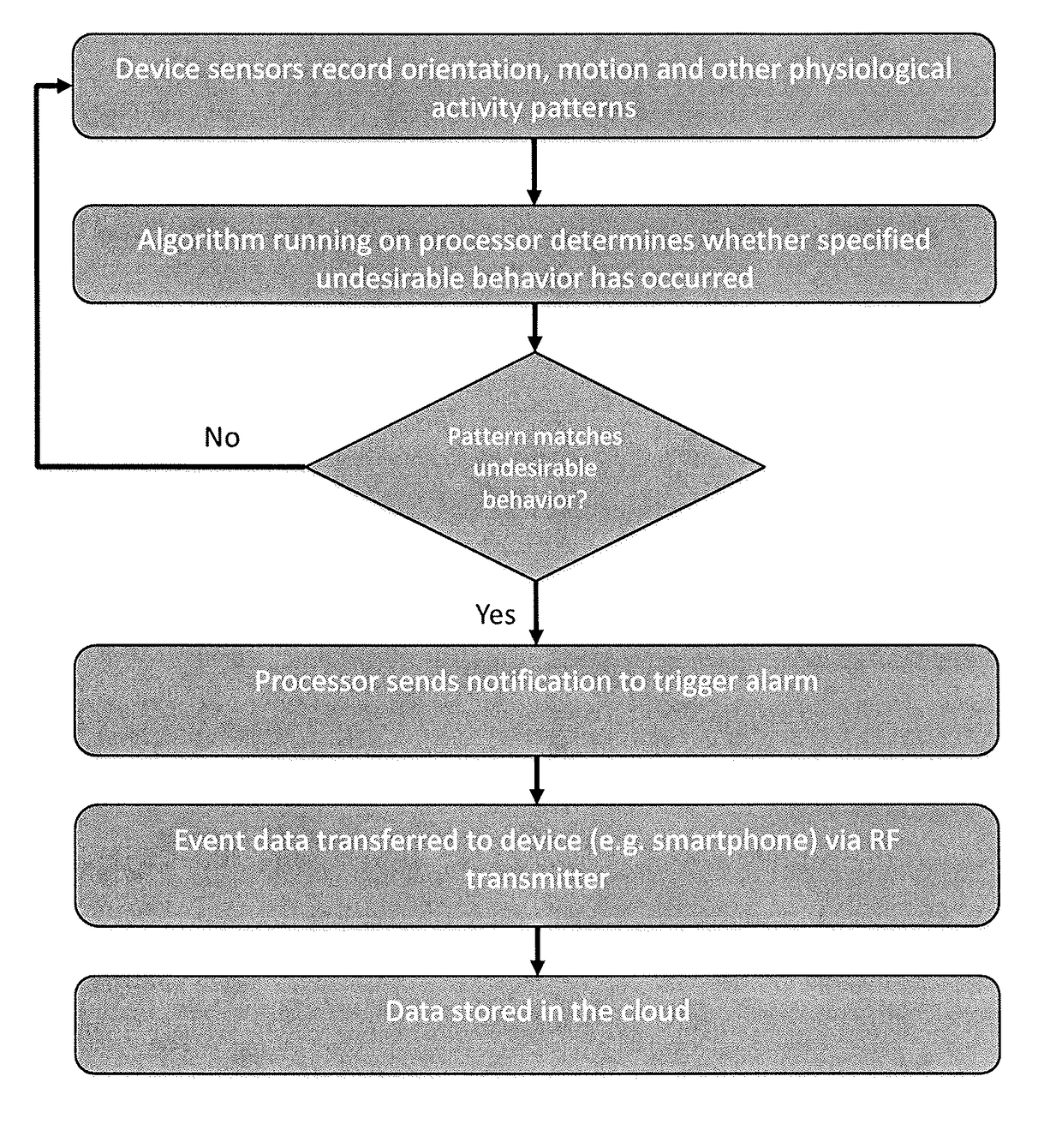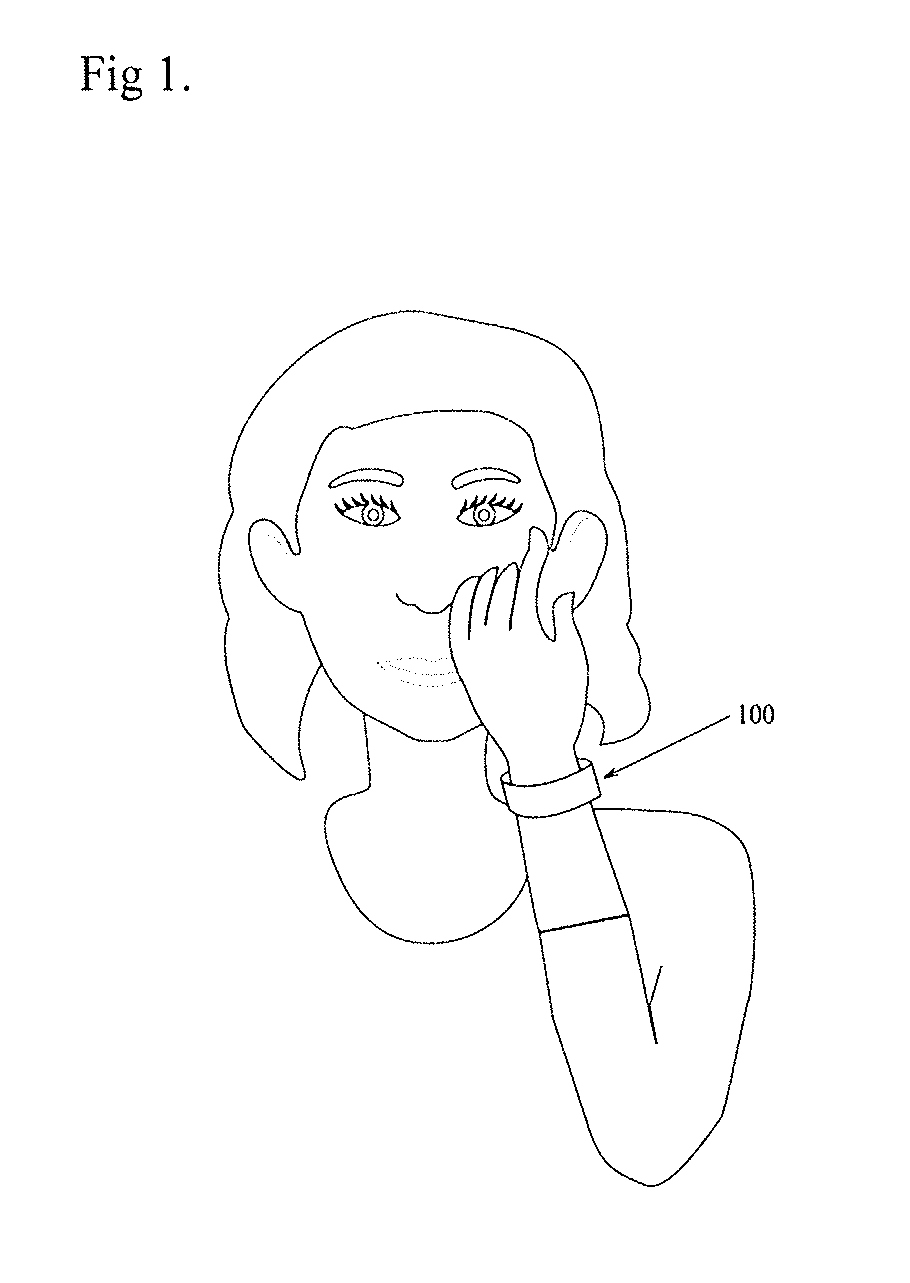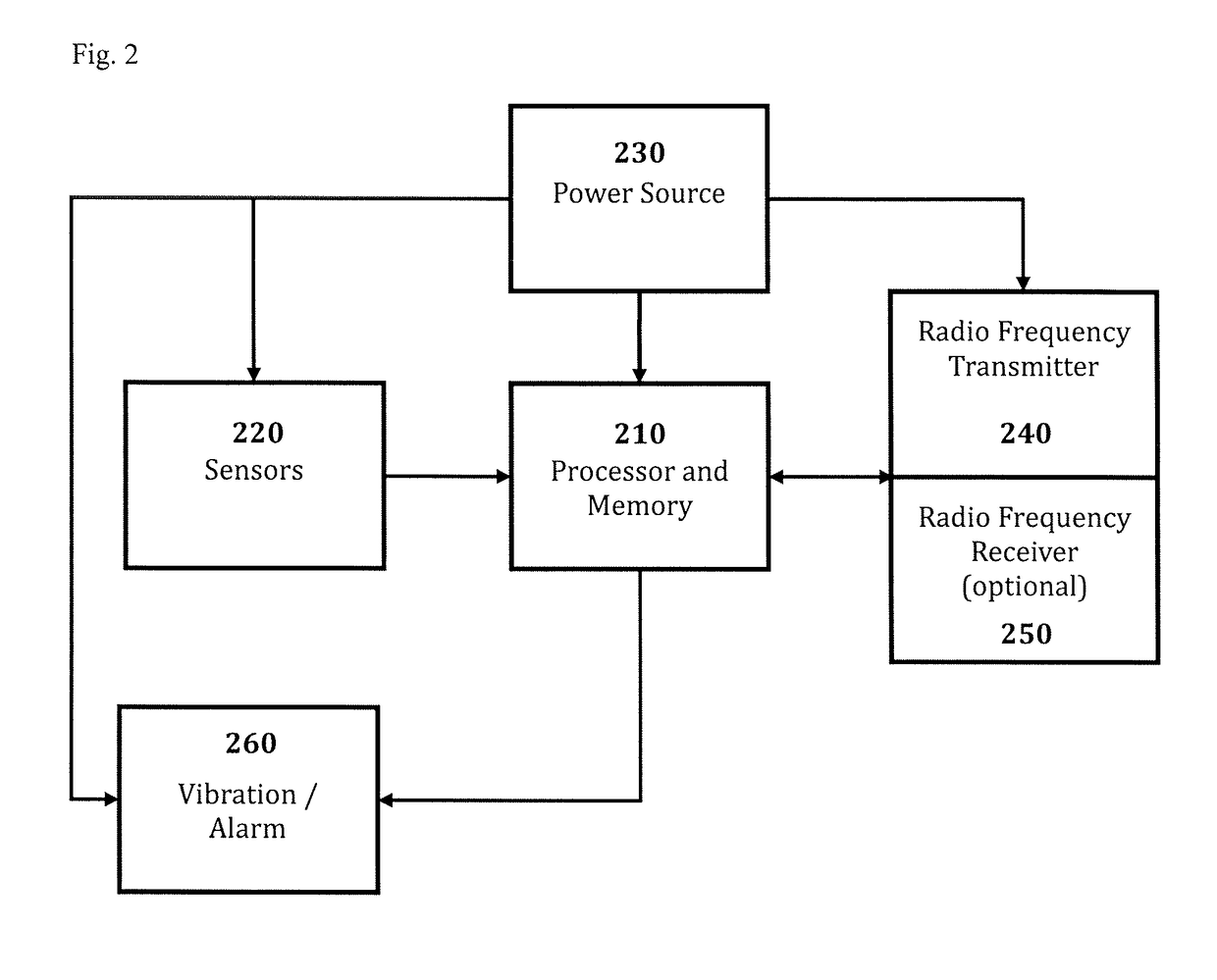Wearable repetitive behavior awareness device and method
a repeating behavior and awareness device technology, applied in the direction of alarms, instruments, etc., can solve the problems of hair loss, distress of persons with trichotillomania, and difficulty in determining the prevalence rate of bfrbs
- Summary
- Abstract
- Description
- Claims
- Application Information
AI Technical Summary
Benefits of technology
Problems solved by technology
Method used
Image
Examples
example use case
[0021]In the case of an individual with trichotillomania who pulls from the eyebrows and eyelashes, the device worn on both wrists would help him or her become more aware of the act of pulling, whenever the algorithm on the device detects the undesired behavior. The user has the option of using the algorithms already programmed on the device (e.g. for common undesirable movements), or can train the algorithm to detect a custom behavior. If the user chooses to train the algorithm, he or she would do so by performing the behavior and giving feedback (details below) so as to minimize the occurrence of false positives (instances when the alarm is actuated but the behavior performed is benign) as well as false negatives (instances when the alarm is not actuated in spite of the undesirable behavior having been performed). Once the algorithm has been trained, the user could wear the device to alert him or her when the hands have moved to the face and are near the eyebrows / eyelashes.
[0022]T...
PUM
 Login to View More
Login to View More Abstract
Description
Claims
Application Information
 Login to View More
Login to View More - R&D
- Intellectual Property
- Life Sciences
- Materials
- Tech Scout
- Unparalleled Data Quality
- Higher Quality Content
- 60% Fewer Hallucinations
Browse by: Latest US Patents, China's latest patents, Technical Efficacy Thesaurus, Application Domain, Technology Topic, Popular Technical Reports.
© 2025 PatSnap. All rights reserved.Legal|Privacy policy|Modern Slavery Act Transparency Statement|Sitemap|About US| Contact US: help@patsnap.com



